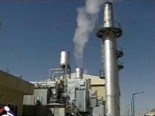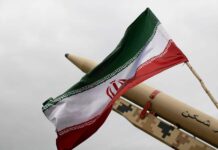 The Obama administration, citing evidence of continued troubles inside Iran’s nuclear program, has persuaded Israel that it would take roughly a year – and perhaps longer – for Iran to complete what one senior official called a “dash” for a nuclear weapon, according to American officials.Administration officials said they believe the assessment has dimmed the prospect that Israel would pre-emptively strike against the country’s nuclear facilities within the next year, as Israeli officials have suggested in thinly veiled threats.
The Obama administration, citing evidence of continued troubles inside Iran’s nuclear program, has persuaded Israel that it would take roughly a year – and perhaps longer – for Iran to complete what one senior official called a “dash” for a nuclear weapon, according to American officials.Administration officials said they believe the assessment has dimmed the prospect that Israel would pre-emptively strike against the country’s nuclear facilities within the next year, as Israeli officials have suggested in thinly veiled threats.
For years, Israeli and American officials have debated whether Iran is on an inexorable drive toward a nuclear bomb and, if so, how long it would take to produce one. A critical question has been the time it would take Tehran to convert existing stocks of low-enriched uranium into weapons-grade material, a process commonly known as “breakout.”
Israeli intelligence officials had argued that Iran could complete such a race for the bomb in months, while American intelligence agencies have come to believe in the past year that the timeline is longer.
“We think that they have roughly a year dash time,” said Gary Samore, President Obama’s top adviser on nuclear issues, referring to how long it would take the Iranians to convert nuclear material into a working weapon. “A year is a very long period of time.”
American officials said the United States believed international inspectors would detect an Iranian move toward breakout within weeks, leaving a considerable amount of time for the United States and Israel to consider military strikes.
The American assessments are based on intelligence collected over the past year, as well as reports from international inspectors. It is unclear whether the problems that Iran has had enriching uranium are the result of poor centrifuge design, difficulty obtaining components or accelerated Western efforts to sabotage the nuclear program.
American officials said new intelligence information was being fed into a long-delayed National Intelligence Estimate on Iran’s nuclear program.
Now, American and Israeli officials believe breakout is unlikely anytime soon. For one thing, Iran, which claims it is interested in enriching uranium only for peaceful purposes, would be forced to build nuclear bombs from a limited supply of nuclear material, currently enough for two weapons. Second, such a decision would require kicking out international weapons inspectors, eliminating any ambiguity about Iran’s nuclear plans.
Even if Iran were to choose this path, American officials said it would probably take Iran some time to reconfigure its nuclear facilities to produce weapons-grade uranium and ramp up work on designing a nuclear warhead.
Israeli officials have indicated that if they saw a race for the bomb under way, they would probably take military action and encourage the United States to join the effort. A spokesman for Israel’s embassy in Washington declined to comment for this article. In interviews, Israeli officials said their assessments were coming into line with the American view, but they remain suspicious that Iran has a secret enrichment site yet to be discovered.
American officials said, in contrast to a year ago, that Iran’s nuclear program was not currently the central focus of discussions between top leaders in Washington and Jerusalem. During the last visit to Washington by Prime Minister Benjamin Netanyahu of Israel in early July, the Iranian program was relatively low on the agenda, according to one senior administration official.
To block Iran’s nuclear ambitions, the United States and the European Union recently imposed harsh economic sanctions aimed at choking off Iran’s energy supplies and prohibiting foreign banks from doing business with financial institutions inside the country.
Several officials said they believed the mounting cost of the economic sanctions, especially those affecting Iran’s ability to import gasoline and develop its oil fields, has created fissures among Iran’s political elite and forced a debate about the costs of developing nuclear weapons.
“The argument is over how far to push the program, how close to a weapon they can get without paying an even higher price,” said the senior administration official, speaking on condition of anonymity because American assessments on these debates are classified. “And we’re beginning to see a lot of divisions inside the leadership on that question.”
Nuclear experts agree that the hardest element of producing a weapon is obtaining weapons-grade material. And for Iran that quest, which stretches back more than 20 years, has not been going well, by most accounts.
For most of this year, Iran has added relatively few centrifuges – the machines that spin uranium at supersonic speed, enriching it – to its main plant at Natanz. Only about half of those installed are operating, according to the International Atomic Energy Agency. So far, Iran has produced about 5,730 pounds, enough, with considerable additional enrichment, to produce roughly two weapons.
The public explanation by American officials is that the centrifuges are inefficient and subject to regular breakdowns. And while Iranian officials have talked about installing more advanced models that would be more efficient and reliable, only a few have been installed.
“Either they don’t have the machines, or they have real questions about their technical competence,” Mr. Samore said.
Some of Iran’s enrichment problems appear to have external origins. Sanctions have made it more difficult for Iran to obtain precision parts and specialty metals. Moreover, the United States, Israel and Europe have for years engaged in covert attempts to disrupt the enrichment process by sabotaging the centrifuges. Officials concede there are potential vulnerabilities in their assessments. Chief among them is whether Iran has hidden another enrichment center somewhere in the tunnels it has dug throughout the country, including some near Natanz.
Last September, Iran acknowledged to inspectors that it had spent years building such a hidden facility near the city of Qum, buried in a mountain near a major military base. The admission came just days before Western leaders revealed the existence of the facility. But after detailed surveys, and interviews with defectors, officials say they have no evidence a second such facility is under construction.
The current draft of the intelligence report also describes considerable division in Iran about whether the goal of the nuclear program should be to walk right up to the threshold of building an actual bomb – which would mean having highly enriched uranium on hand, along with a workable weapons design – or simply to keep enough low-enriched uranium on hand to preserve Tehran’s options for building a weapon later.
Even as American and Israeli officials agree that the date that Iran is likely to have a nuclear weapon has been pushed into the future, that does not mean that Israel has abandoned the idea of a possible military strike.
American officials said that Israel was particularly concerned that, over time, Iran’s supreme leader could order that nuclear materials be dispersed to secret locations around the country, making it less likely that an Israeli military strike would significantly cripple the program.
{NY Times/Matzav.com Newscenter}












US in danger? Probaly
Israel in danger? YUP – But what does Obama care!
if Iran were to take the critical enrichment steps toward a nuclear device, inspectors would be able to detect them within weeks.
see this article below that implies iran would be bombed when detected and they would be detected
Daily Beast on the NY Times article “Irans nuclear program is nothing to worry about, at least not yet. The U.S. has convinced Israel that even if Iran were to scramble to build a nuclear device, it would take at least a year because of a host of internal struggles. According to the New York Times, American and Israeli officials now believe breakout is unlikely anytime soon. We think that they have roughly a year dash time, said Gary Samore, President Obamas top adviser on nuclear issues. A year is a very long period of time. Officials added that if Iran were to take the critical enrichment steps toward a nuclear device, inspectors would be able to detect them within weeks. In Iran, the race to develop nuclear capability has become a prickly issue. The argument is over how far to push the program, how close to a weapon they can get without paying an even higher price, one senior U.S. administration official said.
Read it at The New York Times “
So we have a year. Why does this mean we should wait? What are we waiting for? If we expect to attack them when they have it doesn’t it mean we should do it now?
Instead of being reassured, the Israelis should be realizing that Obama will do nothing to stop Iran/Russia. The confusing intelligence coming from Iran is likely being planted to make it palatable for him to put off a decision. Iran already knows that Obama will grasp at anything to avoid attacking muslims and is happy just to talk.
The posuk tells us Lev Mlochim Vsorim Byad Hashem – the hearts of rulers are in the hand of Hashem. It would seem then that the hearts of rulers are subject to less bechira than others, if so why should they be held responsible for their deeds? Now we understand; Hashem just chooses those who would do what he wants done at that particular time. Like Paroh Amalek Achashverosh and Obama.
During the Bush administration (2007) 16 different intellegent agencies released a report saying that Iran has scraped their plans for a Nuclear weapan. Everyone (not me and you) believed it then. then a year after that they released a new report that said “we had made a mistake” as evidence proved that Iran was working all along and had never stoped trying to develope a nuclear weapon. SO WHY DOES ANYONE STILL HAVE CONFIDENCE IN THESE REPORTS???